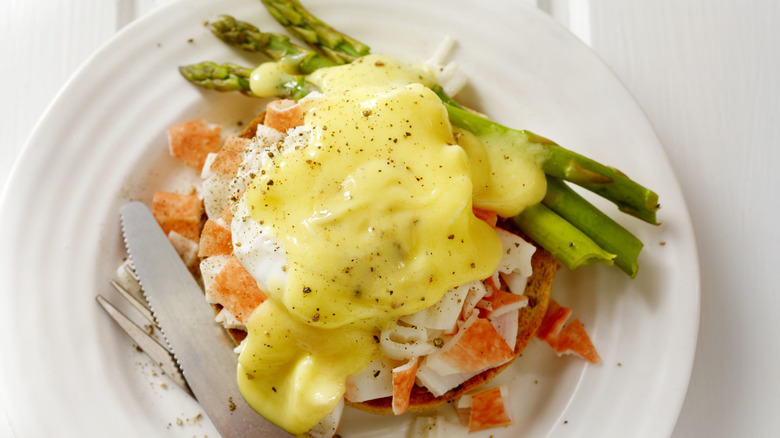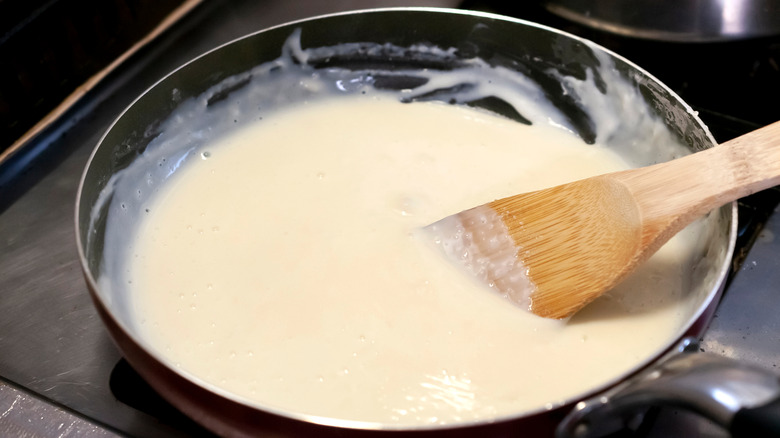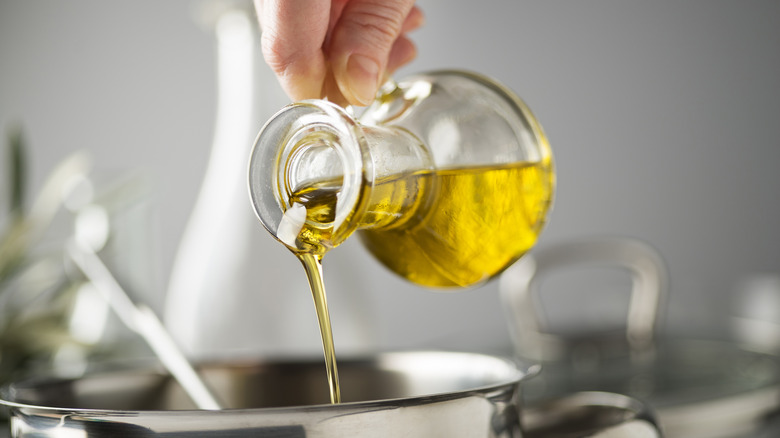Is It Safe To Eat A Curdled Cream Sauce?
Dairy and egg-based sauces, including béchamel and hollandaise, are an indulgent addition to many recipes. However, these sauces run the risk of breakage or curdling, which occurs when proteins come apart and join back together, leading to a lumpy, unappealing mess. The good news is that it's totally safe to eat a broken or curdled sauce, as they pose no food safety issues. The bad news is that curdled sauces may be so off-putting that you, your family, or your guests, lose all interest in eating them.
Dairy is prone to curdling because of its inherent makeup. Take milk, for instance, which consists of proteins, water, and fat. When milk is exposed to heat during the cooking process, these components separate and behave in some seemingly strange ways. For example, the proteins in milk will bind together after separating from the water, which leads to an unpleasant curdled texture. While this process is desired when making cheese, it's definitely not a welcomed sight when whipping up Eggs Benedict. And although the science behind curdled sauce is clear, how does it actually happen in the kitchen?
Reasons why an egg or dairy-based sauce might curdle
There are numerous cooking faux pas that can lead to a curdled sauce. Boiling milk or eggs is a surefire way to cause the separation of different components, which is why these sauces should be simmered and not brought to a full-on boil. The addition of acids, such as vinegar, can also lead to this unwanted effect. This is because acidic ingredients lower the pH of dairy products like milk, which then causes them to separate and reconvene in undesirable ways.
Even the way you incorporate your ingredients into your sauce can lead to curdling. Adding eggs and dairy to a mixture too soon increases the risk of separation. Adding these ingredients too quickly can lead to the same poor outcome. So now that you understand why curdling happens, you're probably wondering how to rescue a sauce that has separated. Unfortunately, fixing a broken sauce is often easier said than done.
Can you fix a curdled sauce?
While some curdled sauces can't be salvaged no matter what, there is one method you can try that may bring the components back together in a way that will please your palate. One simple method involves simply adding more water to the mixture, which can potentially recapture the fat that has separated from the rest of the sauce. To perform this hack, take approximately ¼ cup of water and add it to the pan where the sauce is simmering. You must repeatedly whisk the mixture while it's still simmering, which should hopefully reintegrate the separate components back together.
Because there are no guarantees that you can actually fix a curdled sauce, a much better course of action is to prevent the sauce from breaking in the first place. Adding ingredients in the proper order is a major help. In this case, water gets added first, then eggs, then any oil-based components. Constantly stirring the sauce as it simmers is another important step, as it can help you avoid breakage. Finally, you must ensure that you're cooking the mixture at a lower temperature and that you're not leaving it exposed to the hot stovetop for too long. These steps will ensure that any egg or dairy-based sauces you concoct in your kitchen will look as amazing as they taste.


